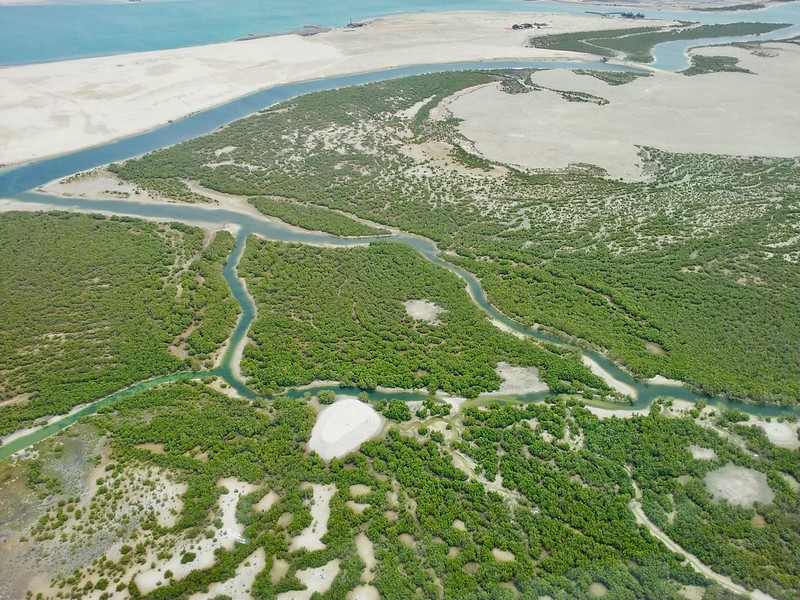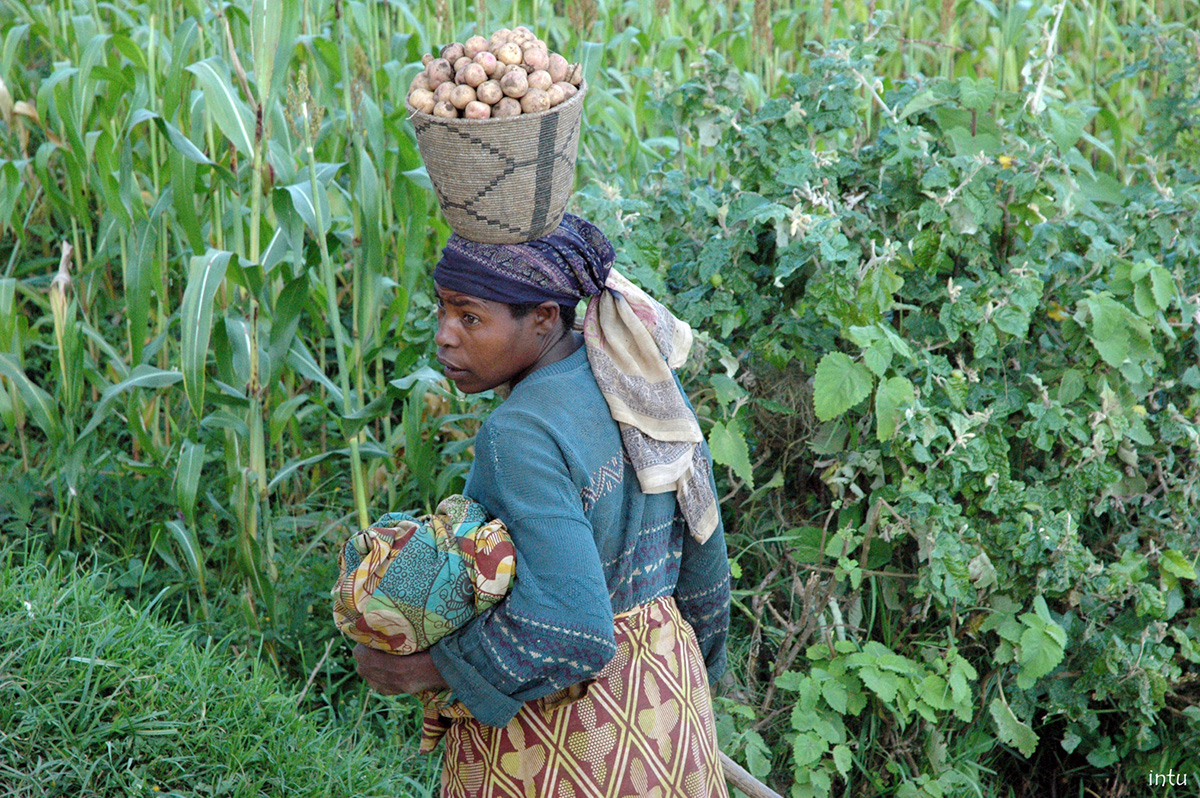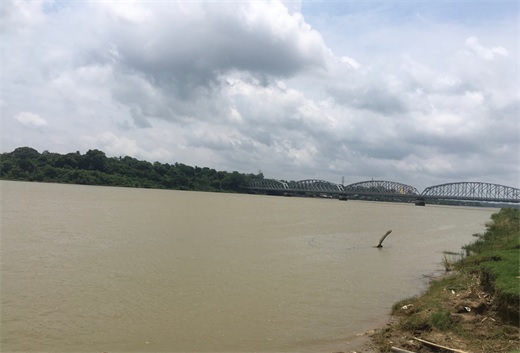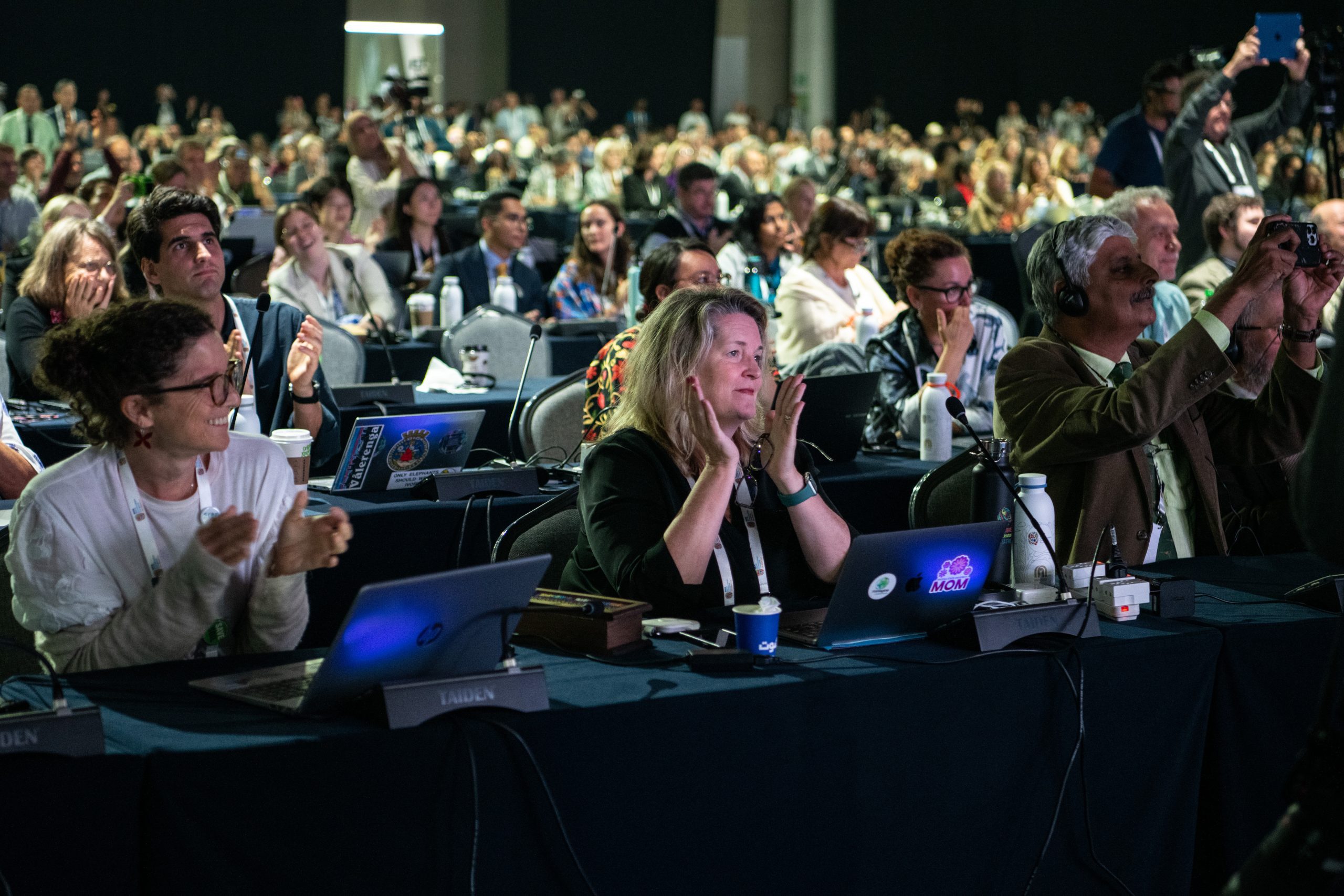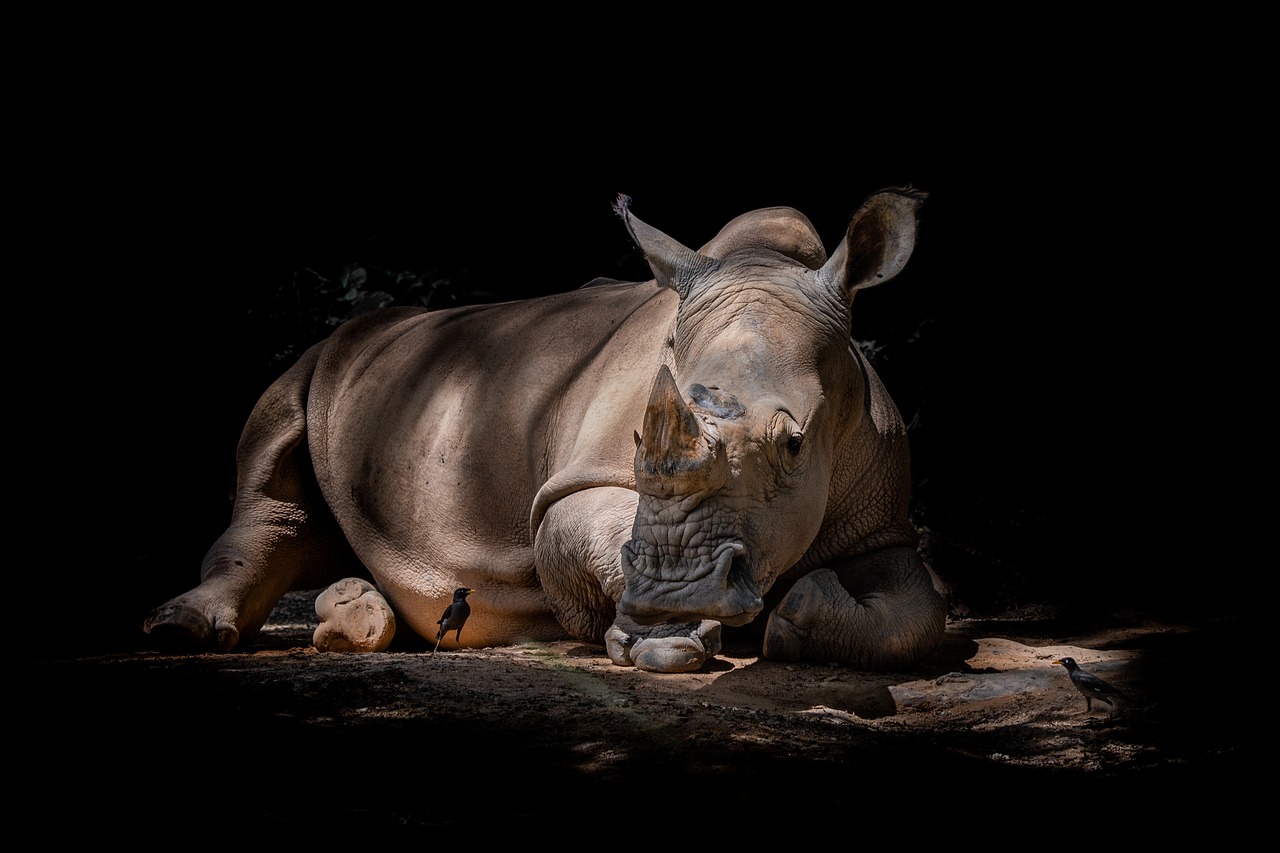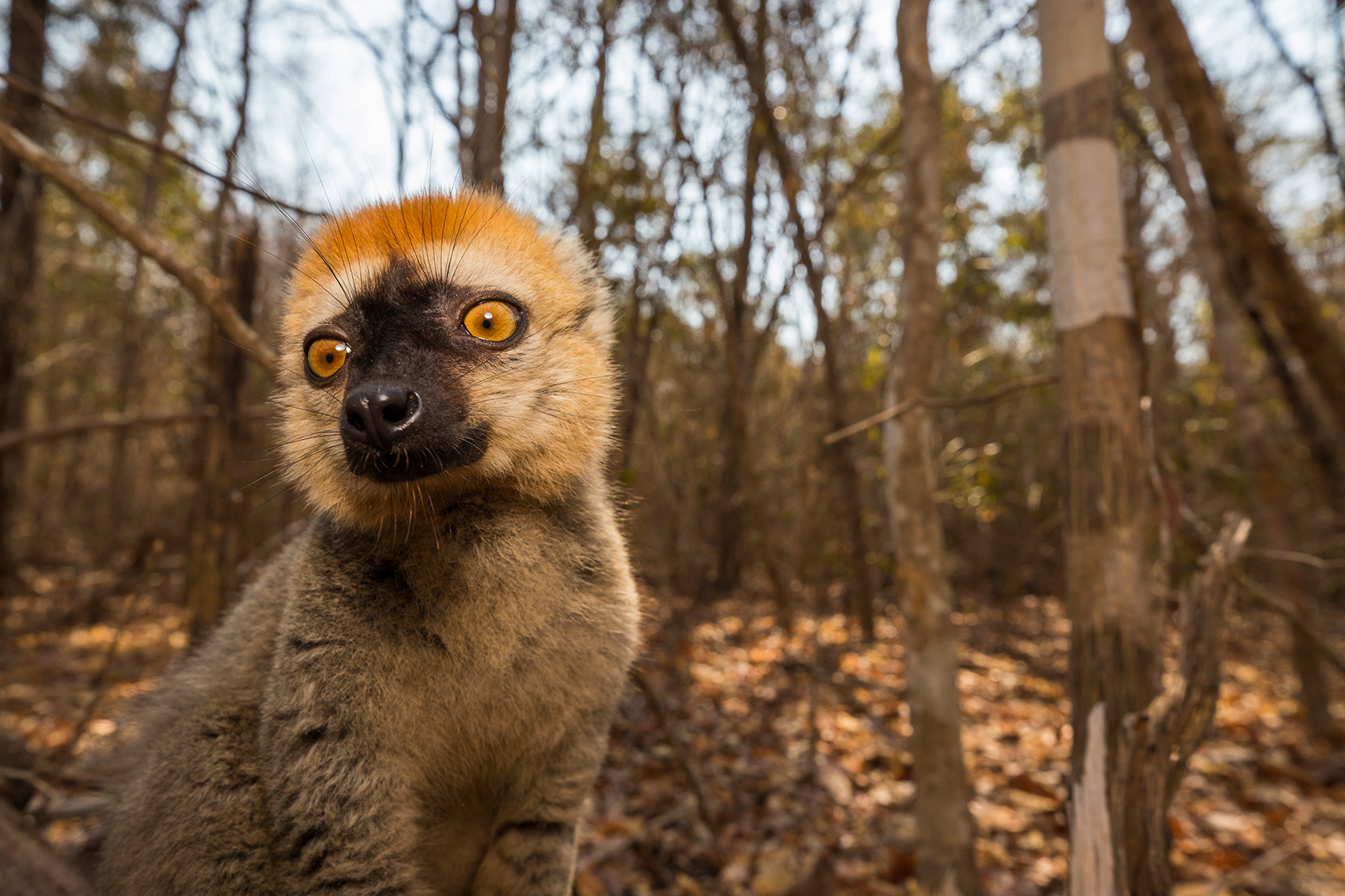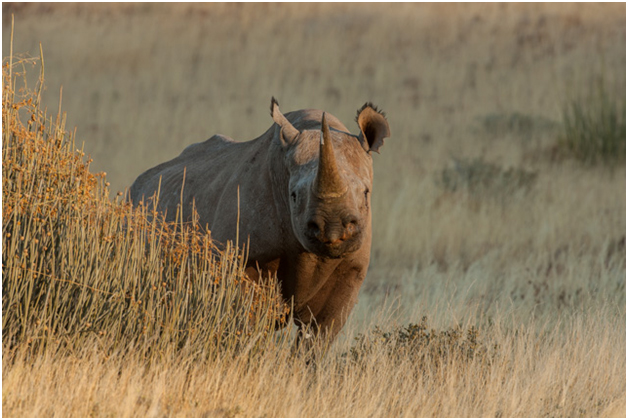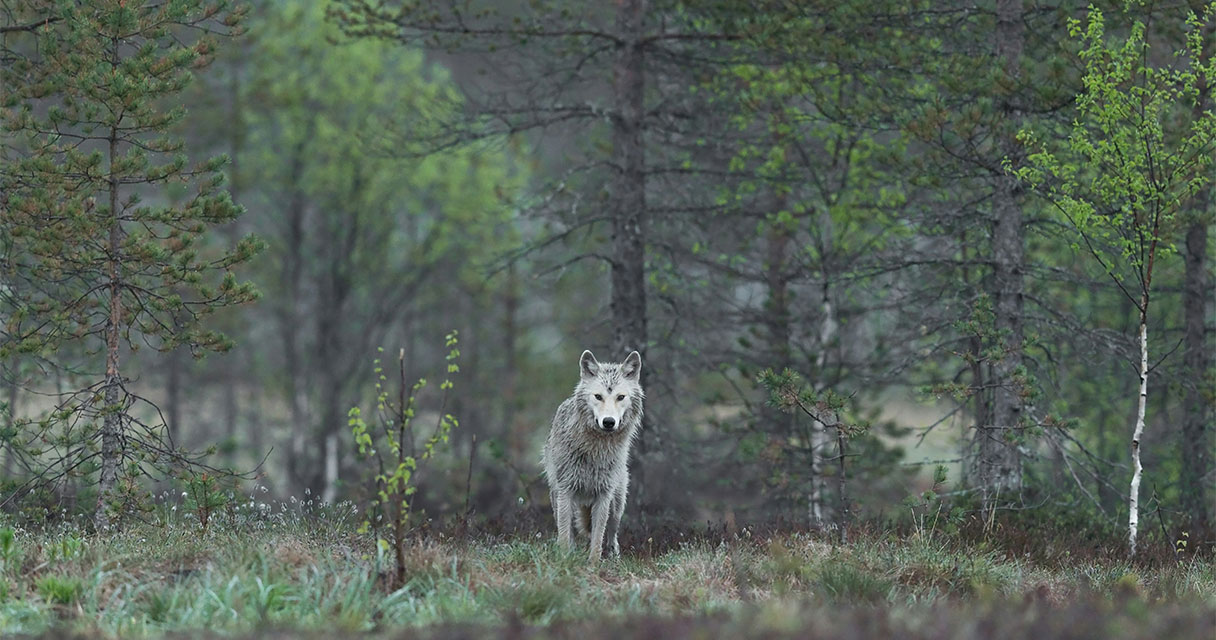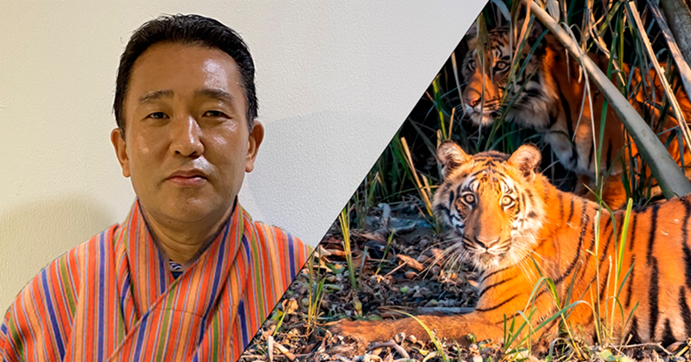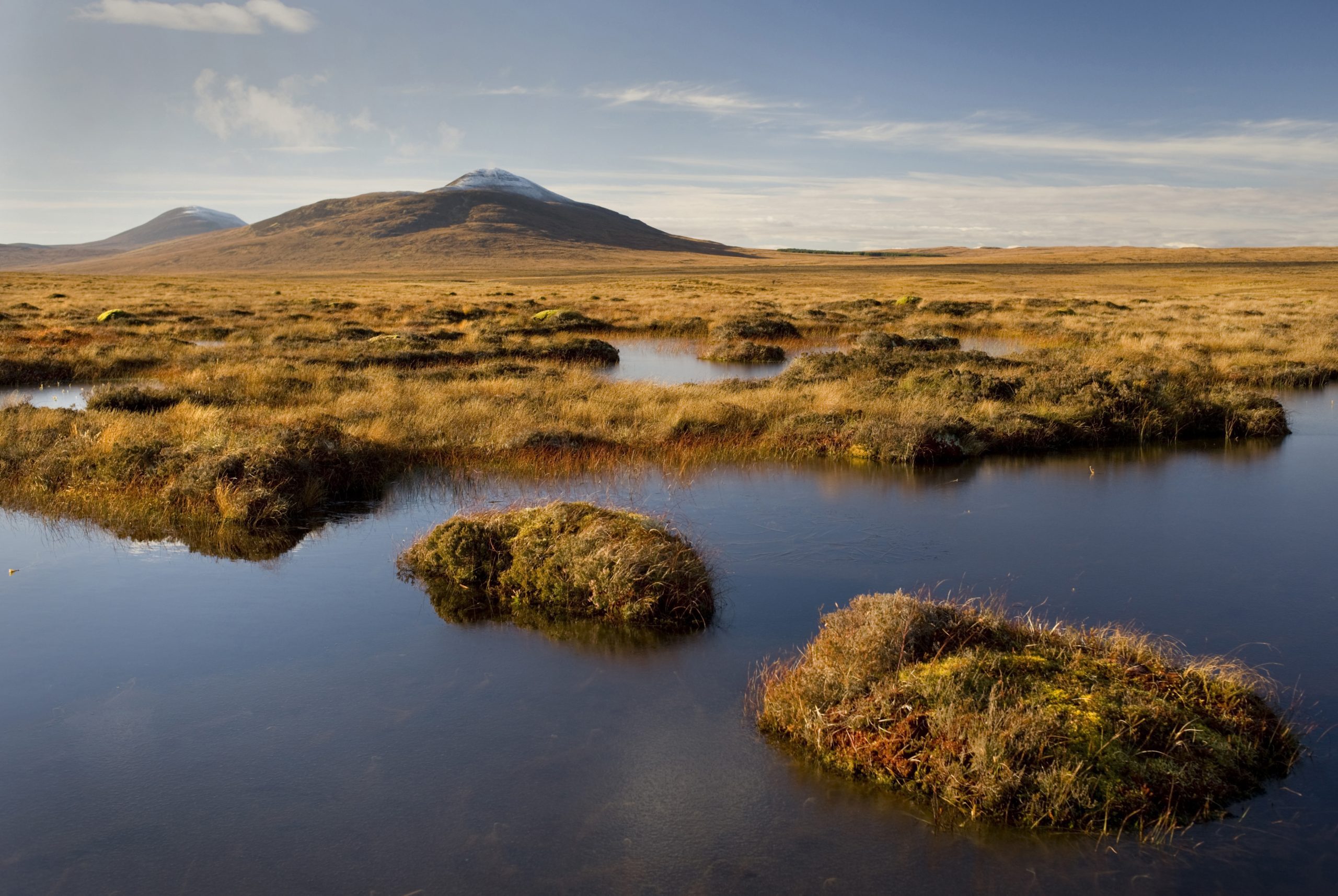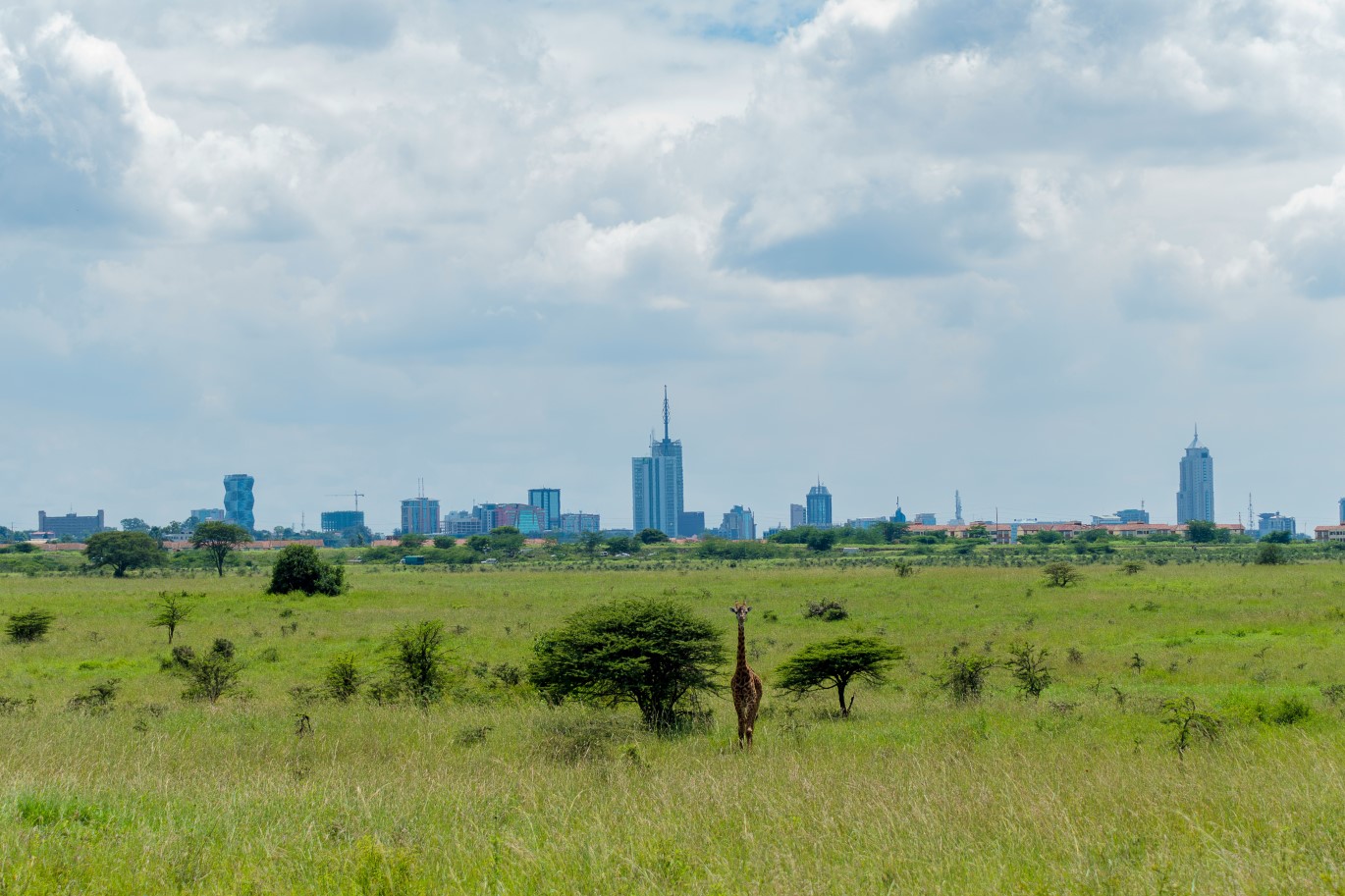On 9 October 2025, the IUCN World Conservation Congress 2025, the world’s largest and most inclusive biodiversity summit, will open in Abu Dhabi, United Arab Emirates.
Related content
Primary tools and resources
The CBD Programme of Work on Protected Areas
This programme of work contains four interlined, cross-cutting elements and 16 programme goals. It is intended to assist Parties in establishing national programmes of work with targeted goals, actions, specific actors, time frame, inputs and measurable outputs. Parties may select from, adapt, and/or add to the activities suggested in the current programme of work according to national and local conditions and their level of development.
The Mohamed bin Zayed Species Conservation Fund
The Mohamed bin Zayed Species Conservation Fund The Fund was established in 2008 with an initial endowment of €25,000,000 to: Provide targeted grants to individual species conservation initiatives; Recognize leaders in the field of species conservation; and Elevate the importance of species in the broader conservation debate. The Fund provides small grants to boots-on-the-ground, in-the-field species conservation projects for the world’s most threatened species.
The Fund is open to applications for funding support from all parts of the world for direct conservation projects focused on threatened plant, animal, and fungus species. Grants are awarded according to criteria set by the Species Fund, and are for a maximum of $25,000.
PANORAMA – Solutions for a Healthy Planet
The PANORAMA platform documents and promotes examples of inspiring solutions on conservation and sustainable development topics. PANORAMA allows practitioners to share their experiences, increase recognition for successful work, and to learn how similar challenges have been addressed around the globe. Over 1200 case studies are presented in a standard format that identifies “building blocks” (key success factors) and the context in which solutions were implemented. Solutions consist of elements that can potentially be replicated or scaled up in other geographic, social, or sectorial contexts. The PANORAMA initiative has many partners. The partnership secretariat is jointly managed by IUCN and GIZ.
Species 360
Species360 is a non-profit NGO working in wildlife care to improve animal welfare and species conservation. It mobilizes a network of more than 1,300 aquarium, zoo, university, research, and governmental members in 102 countries. A central part of is the Zoological Information Management System (ZIMS), the world’s leading resource for the collection and sharing of data on animals, enabling ex situ institutions to manage their collections effectively and contribute valuable information to global conservation initiatives. ZIMS is the world’s most comprehensive knowledge database on more than 22,000 species. In 2022, Species360 expanded its mission to include flora and extend its operations to horticultural record-keeping, with the addition of Hortis – a specialized software for record-keeping and management of botanical collections.
How to use
Information on Species 360, ZIMS, and Hortis is available at: https://species360.org/about-us/about-species360/
To access Species 360 data it is necessary to register: https://species360.org/become-a-species360-member/
CMS Guidelines to Prevent the Risk of Poisoning to Migratory Birds
These guidelines were prepared in 2016 by the Preventing Poisoning Working Group of the Convention on the Conservation of Migratory Species of Wild Animals. The guidelines cover the impacts from five priority poisoning areas: insecticides, rodenticides, poison-baits, veterinary pharmaceuticals, lead ammunition and fishing weights. Six key recommendations.
FAO tools and resources on Illegal, Unreported and Unregulated (IUU) fishing
Illegal, unreported, and unregulated (IUU) fishing is one of the greatest threats to marine ecosystems. IUU fishing takes advantage of corrupt administrations and exploits weak management regimes, in particular those of developing countries lacking the capacity and resources for effective monitoring, control, and surveillance (MCS). The FAO has produced three volumes in the series Checklists and Technical Guidelines to Combat Illegal, Unreported and Unregulated (IUU) Fishing. Volume III is a Checklist of monitoring, control and surveillance (MCS) systems, operations, procedures and tools. It provides a list of minimum requirements to ensure that the national MCS systems, operations, procedures, and tools aimed at combating IUU fishing are of the desired standard. Additional information on methodologies and indicators is available on the FAO website.
How to use.
- Further details of the FAO tools are available at: https://www.fao.org/iuu-fishing/en/
- The Checklists and Technical Guidelines can be downloaded at: https://www.fao.org/documents/card/en/c/cd0245en
Zero Poaching Toolkit
The Zero Poaching Toolkit helps national and state agencies, protected area managers, rangers, and other frontline protection staff in anti-poaching efforts. The toolkit contains resources on assessment, crime prevention strategies, community involvement, technology, capacity, and cooperation. The tools are freely available and well supported by a wide range of organizations including IUCN and many international NGOs. The tools provide the most practical ways to identify and close gaps in protection activities at the field level. The Training Guidelines for Field Rangers is the first of a series of guidelines to provide a standard for training field rangers.
Living Planet Index (LPI)
The Living Planet Index measures the state of the world’s biodiversity based on population trends of vertebrate species from terrestrial, freshwater, and marine habitats. The LPI has been adopted by the Convention of Biological Diversity (CBD) as an indicator of progress towards its targets. The LPI is compiled by WWF and ZSL based on trends in thousands of population time-series data collected from monitored sites around the world. The Living Planet Database contains population time-series data on the abundance of tens of thousands of vertebrate species between 1970 and 2021. It is publicly available, except for some confidential records that cannot be shared.
How to use
- The annual Living Planet Report can be downloaded at: https://www.wwf.org.uk/our-reports/living-planet-report
- The latest results and the technical supplement are available at: https://www.livingplanetindex.org/
- Data in the Living Planet Database can be searched or downloaded at:
EDGE Protected And Conserved Area Fund
The EDGE of Existence programme was the first global conservation initiative to focus specifically on threatened species that represent a significant amount of unique evolutionary history.
Using a scientific framework to identify the world’s most Evolutionarily Distinct and Globally Endangered (EDGE) species, the EDGE of Existence programme highlights and protects some of the most unique, extraordinary, and overlooked species on the planet. EDGE species have few close relatives on the Tree of Life and are often extremely unusual in the way they look, live and behave, as well as in their genetic makeup. They represent a unique and irreplaceable part of the world’s natural heritage, yet an alarming proportion are on the verge of extinction.
To safeguard these species, we are committed to supporting, strengthening, and diversifying conservation leadership in critical regions. The EDGE Fellowship exemplifies this commitment. It is a 28-month fellowship for local early-career conservationists from lower- and middle-income countries. We equip these emerging leaders—EDGE Fellows—with the knowledge, skills, and opportunities required to advance their careers and spearhead effective conservation efforts for the world’s most unique and extraordinary species.
The extinction of species is a call to action for all of us, and we stand ready to answer that call and contribute to a healthier and vibrant planet for all species.
The Coalition for Conservation Genetics
The Coalition is a global network of conservation genetic experts working towards a shared goal of improving the integration of genetic information into conservation policy and practice.
The Coalition also aims to increase global capacity in conservation genetics by offering opportunities and support for currently underrepresented groups.
How to use
Further information is available at: https://www.coalitionforconservationgenetics.org
A set of webinars, reports, and publications on genetic research, capacity building, and policy are available on the Resources page at:
https://www.coalitionforconservationgenetics.org/resources
The study by O’Brien et al. (2022) can be accessed at: Bringing together approaches to reporting on within species genetic diversity – O’Brien – 2022 – Journal of Applied Ecology – Wiley Online Library
WTO Agreement on Fisheries Subsidies
The World Trade Organization (WTO) Agreement on Fisheries Subsidies, was adopted at the 12th Ministerial Conference (MC12) on 17 June 2022. It prohibits harmful fisheries subsidies, which are a key factor in the widespread depletion of the world’s fish stocks.
Members also agreed at MC12 to continue negotiations on outstanding issues with a view to making recommendations by MC13 for additional provisions to further enhance the disciplines of the Agreement.
The IUCN Red List of Ecosystems (RLE)
This introductory guide draws on a number of key IUCN Red List of Ecosystems (RLE) papers, case studies and background documents to provide a practical introduction to the RLE. It targets those who wish to gain a deeper understanding of the RLE as a risk assessment tool and those who wish to learn more about its possible applications in implementing conservation action. This document draws heavily on Version 1 of the Guidelines for the application of the IUCN Red List of Ecosystems Criteria and Categories and provides an overview of the scientific foundations supporting the RLE categories and criteria.
The Mohamed bin Zayed Species Conservation Fund
The Mohamed bin Zayed Species Conservation Fund The Fund was established in 2008 with an initial endowment of €25,000,000 to: Provide targeted grants to individual species conservation initiatives; Recognize leaders in the field of species conservation; and Elevate the importance of species in the broader conservation debate. The Fund provides small grants to boots-on-the-ground, in-the-field species conservation projects for the world’s most threatened species.
The Fund is open to applications for funding support from all parts of the world for direct conservation projects focused on threatened plant, animal, and fungus species. Grants are awarded according to criteria set by the Species Fund, and are for a maximum of $25,000.
IUCN Important Marine Mammals Areas (IMMAs)
Important Marine Mammal Areas (IMMAs) are defined as discrete portions of habitat important to marine mammal species that have the potential to be delineated and managed for conservation. IMMAs consist of areas that may merit place-based protection and/or monitoring. IMMAs are identified through an independent, expert process.
Integrated Biodiversity Assessment Tool (IBAT)
IBAT is a biodiversity impact assessment tool that enables companies and other users to screen the potential risks to biodiversity and key sites from proposed development. IBAT is
based on three global datasets, the IUCN Red List of Threatened Species, World Database on Protected Areas, and World Database of Key Biodiversity Areas]. IBAT provides data, tools, and guidance to assist organisations in acting on biodiversity-related risks and opportunities, and provide sustainable funding to support biodiversity datasets. IBAT has a GIS download service which is available through five plans, ranging from free to USD 35,000 /year, according to the level of access required. Data can be downloaded at global level or at more local levels. Biodiversity data reports can be generated as a pdf document, or as raw data in CSV format, and/or map files. IBAT report templates include a simple proximity report, a World Bank Group risk report, and a freshwater report.
Species+
The Species+ website was developed jointly by UNEP-WCMC and the CITES Secretariat to assist Parties to implement CITES, CMS and other multilateral environmental agreements (MEAs). Species+ contains information on all species listed in the Appendices of CITES and CMS, other CMS Family listings, and in the Annexes to the EU Wildlife Trade Regulations. The species pages contain information on legal, species names and distribution, Appendix listings, references, and other documentation.
The data can be searched by species, location, or Convention. The “Locations” filter allows a search for a species or group of species occurring in a particular country, territory, or region.
Key species lists can be downloaded in an Excel-ready format as a csv file. The terms of use should be reviewed prior to downloading.
IUCN Guidelines for conserving connectivity through ecological networks and corridors
Connectivity conservation is essential for managing healthy ecosystems, conserving biodiversity and adapting to climate change across all biomes and spatial scales. Well-connected ecosystems support a diversity of ecological functions such as migration, hydrology, nutrient cycling, pollination, seed dispersal, food security, climate resilience and disease resistance. These Guidelines are based on the best available science and practice for maintaining, enhancing and restoring ecological connectivity among and between protected areas, other effective areas based conservation measures (OECMs) and other intact ecosystems. For the first time, this publication introduces a common definition and recommends formal recognition of ecological corridors to serve as critical building blocks of ecological networks in conjunction with protected areas and OECMs. Furthermore, these Guidelines also include 25 case studies that demonstrate current approaches to conserving ecological connectivity and ecological networks for different ecosystems and species, and at different spatial and temporal scales.
IUCN Green List of Protected and Conserved Areas Standard
A protected or conserved area that reaches the IUCN Green List Standard is certified and recognised as achieving ongoing results for people and nature in a fair and effective way. A site that gains ‘Green List’ status demonstrates: Respect: for the local community through fair and meaningful engagement of rights-holders and stakeholders; Design: planning that identifies the needs to secure the important values of the area; Effective management: monitoring of the status of these important values; Successful conservation results: for nature and for people; Clear contribution: to climate change responses, health and well-being and other challenges. The seventeen criteria collectively describe the efforts needed to fully achieve the global Sustainability Standard and all must be achieved for a site to be green-listed. The indicators can be adapted to suit the local context. Any site can join, and work towards achieving verified success, and then attain the Standard or further improve.
Emprendiendo en la conservación
Basándose en ejemplos de los sectores de tecnología y de empresas emergentes (startups), la UICN desarrolló la idea de una incubadora para identificar y alimentar las ideas de los administradores de áreas protegidas y de otros agentes que carecen de conocimientos, recursos o contactos profesionales para hacerlas realidad: la Incubadora para la Conservación de la Naturaleza (INC, por sus siglas en inglés). El objetivo del presente documento es reunir las lecciones, ejemplos y recursos clave generados a través del trabajo de INC para guiar futuros proyectos de financiamiento de la conservación y ayudar a cerrar la brecha entre conservación e inversión.
BIOFIN The Nature of Subsidies: A step-by-step guide to repurpose subsidies harmful to biodiversity and improve their impacts on people and nature
The Biodiversity Finance Initiative (BIOFIN) of United Nations Development Programme (UNDP) has developed this guide to assist countries in assessing to what extent government subsidies are having harmful impacts on biodiversity, and to create action plans to repurpose them to become more nature-positive and enhance positive impacts for both people and nature. The BIOFIN Catalogue of Financing Solutions summarizes over 150 possible financing mechanisms to help countries understand which financing mechanisms are already used around the world. Countries can use this Catalogue to determine priorities for their national biodiversity finance plan.
How to use
The step-by-step guide can be downloaded at:
Further information on BIOFIN and the Catalogue of Financing Solutions are available at:
Open Standards for the Practice of Conservation
The Open Standards for the Practice of Conservation, or Conservation Standards (CS) for short, are a set of principles and practices that bring together common concepts, approaches, and terminology for conservation project design, management, and monitoring. They were developed by the Conservation Measures Partnership (CMP), have been widely adopted, and are updated regularly in collaboration with the wider conservation community. The Conservation Standards are open-source (Creative Commons license) and can be shared, used, and adapted as users wish to fit their context.
The Standards describe ideal practices for doing effective conservation work, using a mutually defined vocabulary and focus on a rigorous approach to project management. Recognising that adequate resources are lacking, a draft “Cookbook” for Lighter Approaches to the Conservation Standards and a supporting video are also provided.
Living Planet Index (LPI)
The Living Planet Index measures the state of the world’s biodiversity based on population trends of vertebrate species from terrestrial, freshwater, and marine habitats. The LPI has been adopted by the Convention of Biological Diversity (CBD) as an indicator of progress towards its targets. The LPI is compiled by WWF and ZSL based on trends in thousands of population time-series data collected from monitored sites around the world. The Living Planet Database contains population time-series data on the abundance of tens of thousands of vertebrate species between 1970 and 2021. It is publicly available, except for some confidential records that cannot be shared.
How to use
- The annual Living Planet Report can be downloaded at: https://www.wwf.org.uk/our-reports/living-planet-report
- The latest results and the technical supplement are available at: https://www.livingplanetindex.org/
- Data in the Living Planet Database can be searched or downloaded at:
PANORAMA – Solutions for a Healthy Planet
The PANORAMA platform documents and promotes examples of inspiring solutions on conservation and sustainable development topics. PANORAMA allows practitioners to share their experiences, increase recognition for successful work, and to learn how similar challenges have been addressed around the globe. Over 1200 case studies are presented in a standard format that identifies “building blocks” (key success factors) and the context in which solutions were implemented. Solutions consist of elements that can potentially be replicated or scaled up in other geographic, social, or sectorial contexts. The PANORAMA initiative has many partners. The partnership secretariat is jointly managed by IUCN and GIZ.
Guidelines for planning and monitoring corporate biodiversity performance
These guidelines offer an approach for developing a corporate-level biodiversity strategic plan, including measurable goals and objectives and a set of core linked indicators, that will allow companies to measure their biodiversity performance across their operations. The Guidelines can be used by any company in any sector that has impacts and dependencies on biodiversity, whether large or small, national or multinational. They are aimed at sustainability teams, managers and other company staff whose roles include strategic planning and reporting related to biodiversity. The focus is on a full-cycle, results-based management approach (not just risk analyses, goal setting or indicator development), since assessing pressures on biodiversity, and planning and developing measurable goals, are key prerequisites for monitoring. They also explain how, by choosing and using appropriate core indicators and building internal capacity and partnerships, companies can aggregate and use biodiversity data at the corporate level in a meaningful way.


